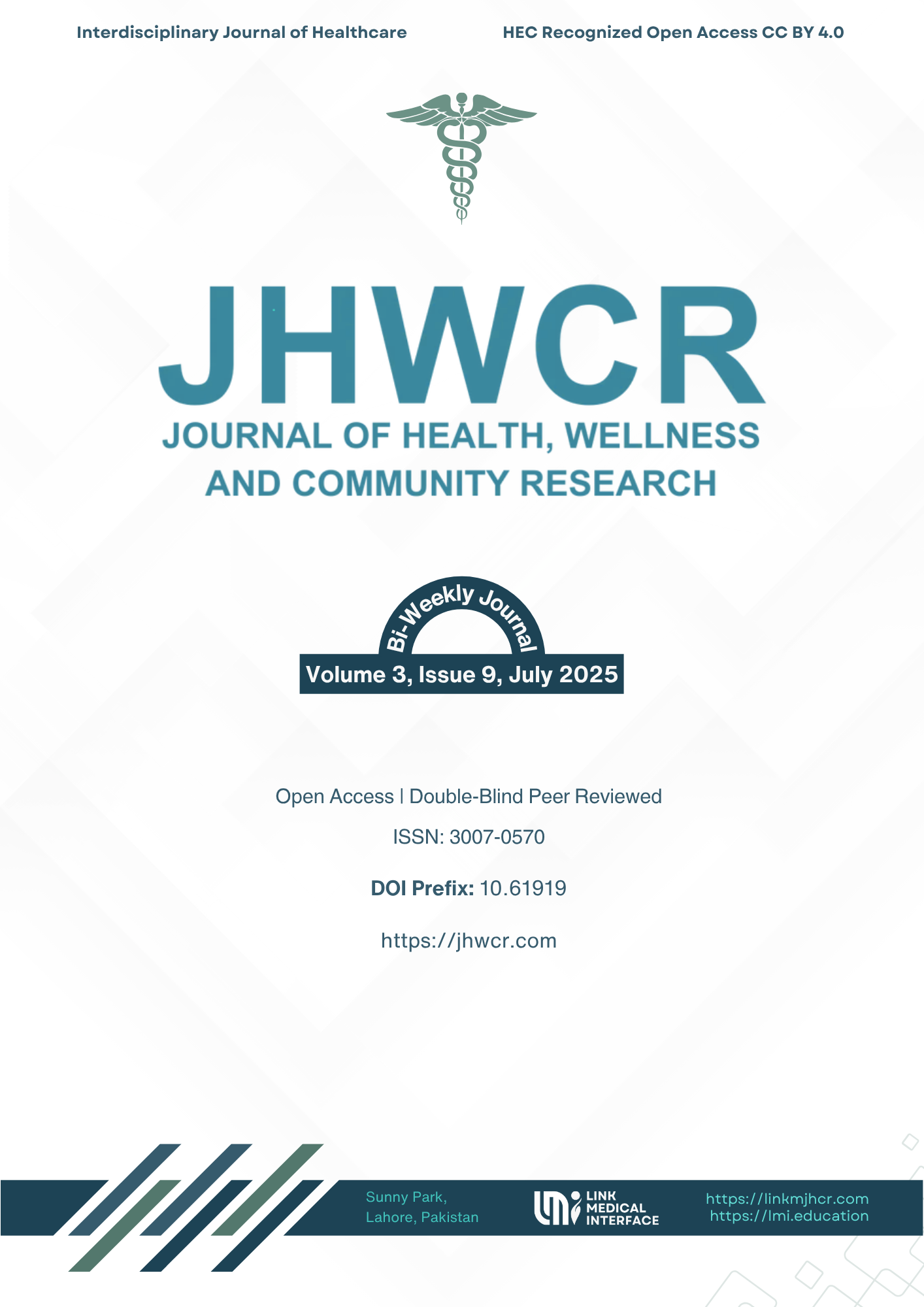Comparison Between Laparoscopic Ureterolithotomy and Push Back Percutaneous Nephrolithotomy in the Treatment of Upper Ureteric Stone
DOI:
https://doi.org/10.61919/c0axpk51Keywords:
ureterolithotomy, percutaneous nephrolithotomy, upper ureteric stone, laparoscopy, postoperative painAbstract
Background: Upper ureteric stones represent a major clinical challenge, often requiring surgical intervention when conservative measures fail. Minimally invasive approaches such as laparoscopic ureterolithotomy and push-back percutaneous nephrolithotomy are widely adopted, but comparative evidence on postoperative pain outcomes remains limited. Objective: To compare postoperative pain, hospital stay, operative time, and stone clearance rates between laparoscopic ureterolithotomy and push-back percutaneous nephrolithotomy in patients with upper ureteric stones. Methods: A randomized controlled trial was conducted at the Institute of Kidney Diseases, Hayatabad Medical Complex, Peshawar, from January to June 2025. Sixty patients aged 18–60 years with radiologically confirmed upper ureteric stones were randomized to laparoscopic ureterolithotomy (n=30) or push-back percutaneous nephrolithotomy (n=30). Pain was assessed using the Visual Analogue Scale (VAS) at 4 and 12 hours postoperatively. Secondary outcomes included operative time, hospital stay, and stone clearance confirmed by imaging. Statistical analyses included t-tests, chi-square tests, and regression adjustment for confounders. Results: Pain scores were significantly lower in the laparoscopic group at both 4 hours (6.2 ± 0.9 vs 7.4 ± 0.8, p<0.001) and 12 hours (4.8 ± 1.1 vs 6.1 ± 0.9, p<0.001). Operative time was longer for laparoscopy (98.4 ± 18.6 vs 76.2 ± 14.8 minutes, p<0.001), but hospital stay was shorter (2.3 ± 0.8 vs 3.1 ± 1.2 days, p<0.001). Stone clearance rates were high and comparable (96.7% vs 93.3%, p=0.55). Conclusion: Laparoscopic ureterolithotomy provides superior postoperative pain control and shorter hospitalization compared with push-back percutaneous nephrolithotomy, without compromising stone clearance.
Downloads
Published
Issue
Section
License
Copyright (c) 2025 Abdus Salam, Ahmad Nawaz, Muzzamil Sohail, Muhammad Waqas, Issa Khan (Author)

This work is licensed under a Creative Commons Attribution 4.0 International License.


